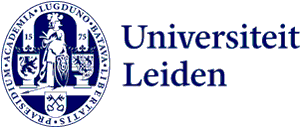
Discovery of unknown translation of René Descartes’ 'L’homme' in Leiden Bibliotheca Thysiana
From time to time, manuscripts that have remained hidden for centuries turn up in library collections and archives. In the archives of the 17th-century Bibliotheca Thysiana at the Rapenburg in Leiden, kept in the Leiden University Library, Rotterdam researcher Erik-Jan Bos discovered a hitherto unknown Latin translation of the groundbreaking book 'L'homme' ('The human being') by René Descartes (1596-1650).
The influential French philosopher wrote the work as early as the 1630s, but after the condemnation of Galileo Galilei by the Inquisition in 1633, Descartes decided not to publish the book containing his "heretical" ideas. Only after his death did a Latin translation of his book appear in Leiden in 1662, followed two years later by a French edition. The now discovered manuscript shows that Descartes' book did indeed circulate in Leiden scholarly circles in the 17th century. Interpretation of this Latin manuscript may shed light on thus far unexplained textual differences between the two printed editions.

René Descartes
French philosopher and mathematician René Descartes lived and worked in the Dutch Republic for more than twenty years. He is reported to have felt at home in the liberal, intellectual climate. He also published his most important works in the Republic. He was a key figure in the development of modern philosophy and science and is considered both the founder of rationalism in science and the father of modern philosophy. His debut, the famous Discours de la méthode, appeared in Leiden in 1637. Before this time, however, he had focused on the study of man. Descartes described the human body in L'homme as a mechanical instrument with a rational soul. His ultimate goal was to write a comprehensive description of the interaction between the human mind and the human body.
Descartes was well aware of the controversial nature of his views and realized that, even in the tolerant Dutch Republic, it would be too dangerous to publish the book. After the condemnation of Galileo Galilei by the Italian Inquisition in 1633, Descartes decided to indefinitely shelve Traité du monde et de la lumière and L'homme. Much of the material found a place in later publications such as the Discours de la méthode, which is currently on display in the Books that made History exhibition in the National Museum of Antiquities in Leiden.
L'homme remained unpublished until Descartes’ death in 1650. It was not until 1662, that his book would be published by the future Leiden professor of Medicine Florentius Schuyl (1619-1669), who translated the French text to Latin and had the book published by the Leiden printers Pieter Leffen and Frans Moeyaert. Schuyl used various manuscripts to translate L'homme, which were circulating among Descartes' friends in the Republic. The unknown author of the discovered translation likely also used such a version. Two years after the Latin edition, a French edition appeared, delivered by the French scholar Claude Clerselier (1614-1684).
Unknown manuscript of 'De Homine'
The discovery of the hitherto unknown Latin translation of L’homme, was made by Erik-Jan Bos, researcher at the Erasmus School of Philosophy, in the archive of the Bibliotheca Thysiana, which is held at Leiden University Libraries. The unique manuscript provides tangible evidence that, despite the lack of a printed edition, Descartes' insights did indeed circulate in the scholarly world of the Republic before his death. Moreover, this manuscript is potentially a key piece in the interpretation of Descartes' text about 'man’. Because there are significant differences between the two printed editions, the correct understanding of the text has been the subject of scholarly debate for centuries.

Erik-Jan Bos: "Descartes' L'homme has an extremely problematic text history; hopes for any clarification seemed lost. This find comes as an overwhelming surprise."
Until now, there was no way to explain differences between the Leiden and French editions and to resolve differences of interpretation. A careful study of the manuscript, which Bos will carry out as a fellow at the Scaliger Institute of Leiden University Libraries, should shed more light on this. For the time being, it remains unclear how this important manuscript ended up in the Bibliotheca Thysiana in the 17th century. It may have entered the archives of the library through Johannes Thysius, or through the first curator of the Bibliotheca Thysiana, Marcus du Tour (1623-1672), who had received his doctorate in Utrecht for a dissertation critical of Descartes.
Bibliotheca Thysiana
Mart van Duijn, curator for post-medieval manuscripts and archives at Leiden University Libraries was pleasantly surprised by the momentous discovery: "This find once again shows how exceptional the collection of this library is, and how important it is to keep studying its archives from different perspectives." The archives of the Bibliotheca Thysiana contain documents about the Thijs (Thysius) family and related families, and about the foundation and functioning of the library, starting in 1653. The entire archive will soon be digitised with the support of Metamorfoze, the national program for the preservation of paper heritage.
Van Duijn: "This 17th-century scholars' library, which is still housed in its original building at the Rapenburg in Leiden, is not only a monumental library, but also still a source of scholarship and research."

